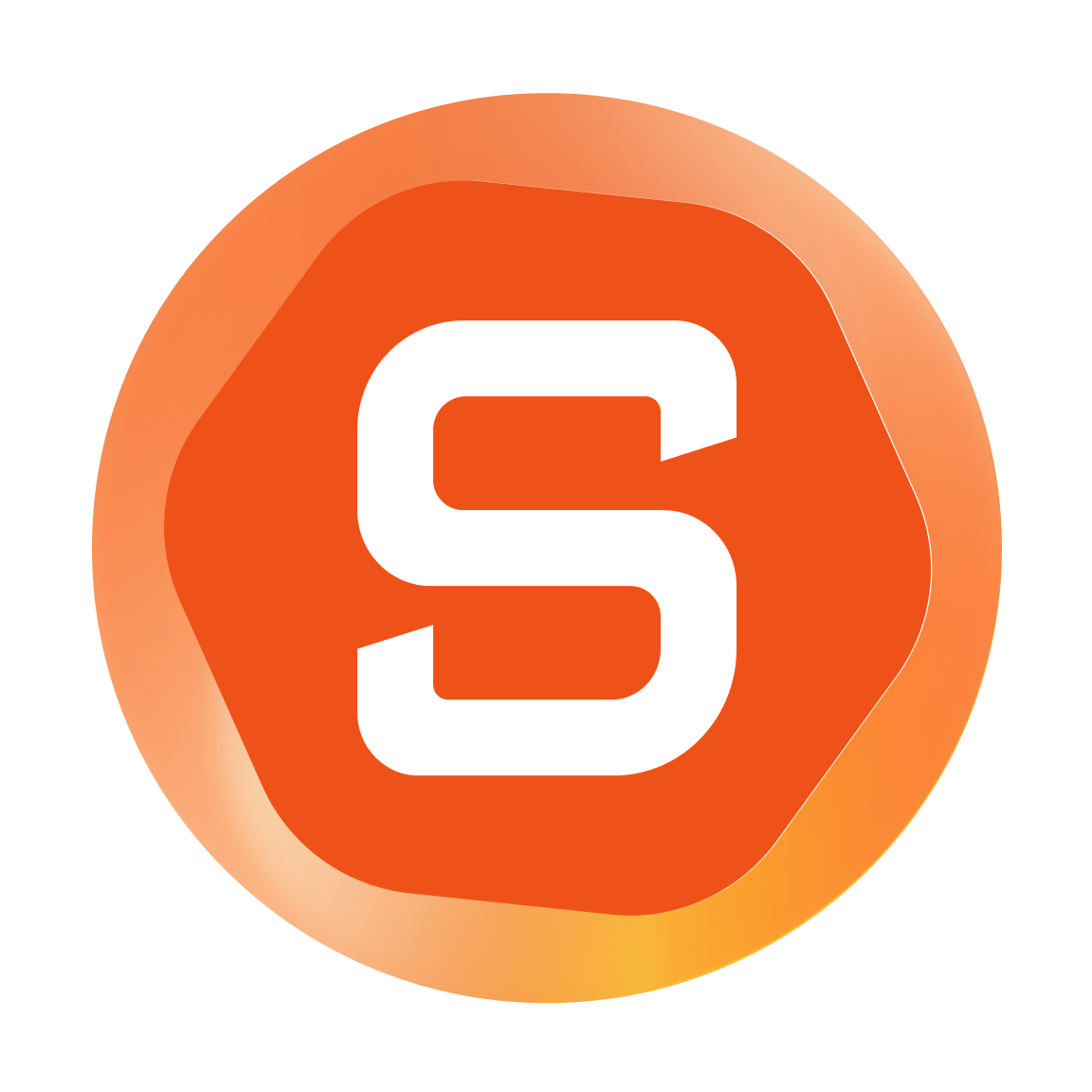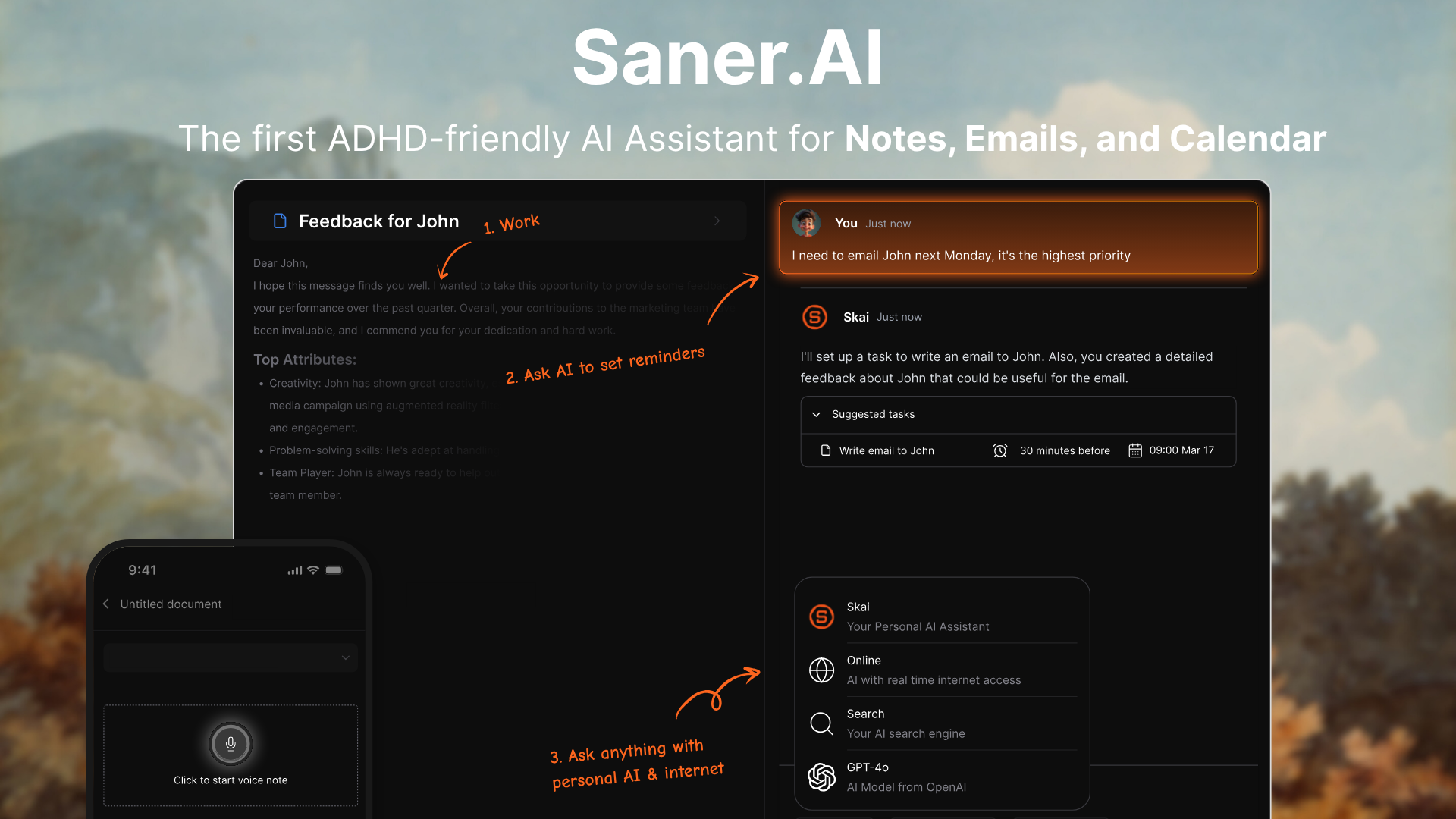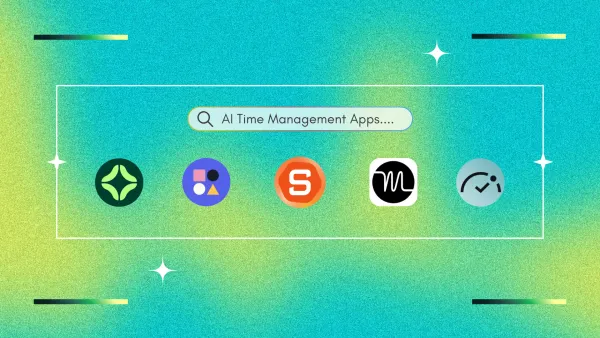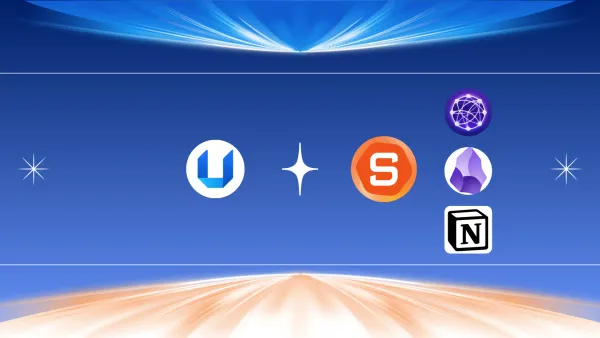Business Management Software: We Tested the Best 7
The Business Management Software are: Saner.AI, Asana, Slack, HubSpot, QuickBooks, Lemlist and Intercom
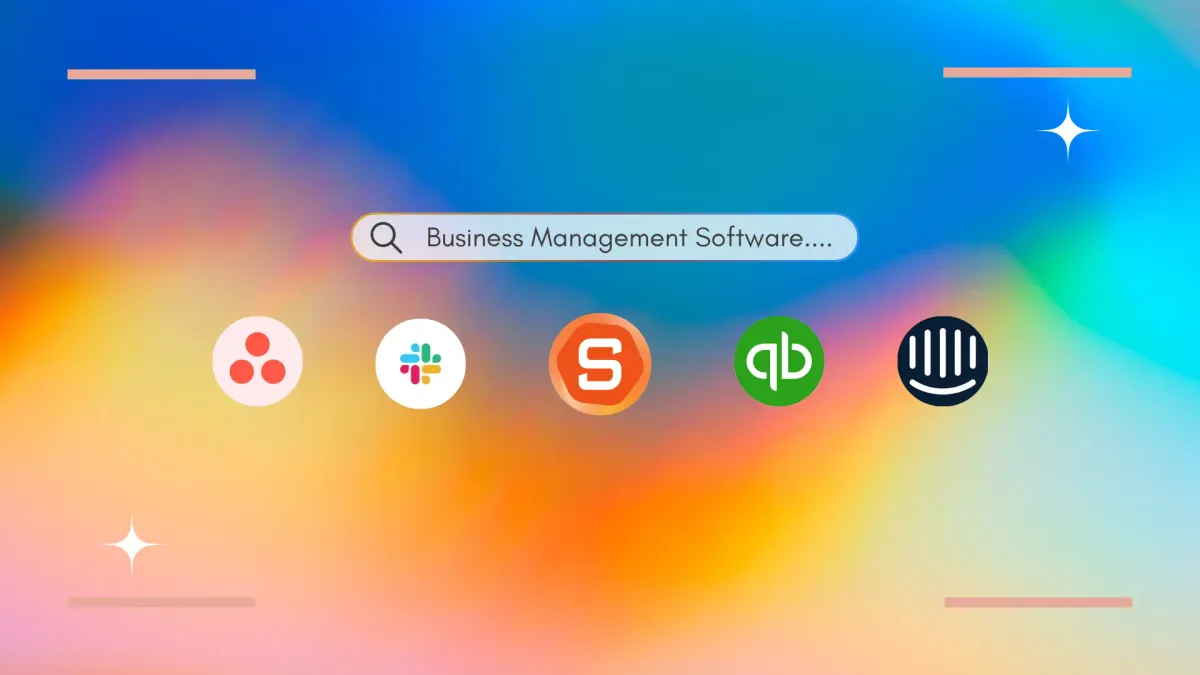
7 Best Business Management Software you should use [2025]
Running a business often feels like juggling too many plates. You’ve got one tool for sales, another for projects, another for finance — and somehow, none of them talk to each other. You spend more time switching tabs and syncing data than actually moving the business forward.
That’s exactly why business management software exists.
In this guide, we’ll break down what business management software actually does, why it matters more than ever in 2025, and how to choose the right one for your team.
We’ll also review the best business management software this year so you can find the tool that fits how you work, not the other way around.
What Is Business Management Software?
At its core, business management software is a system that helps you run all the moving parts of your company from one central place.
Think of it as your business command center - a digital home base where you can:
- Assign and track projects
- Handle invoices, expenses, and budgets
- Manage employee information, payroll, and performance
- Keep track of leads and customer relationships (CRM)
- See reports and insights across the company
In 2025, the real game-changer is AI integration. The best modern platforms don’t just store data; they act on it. They can automatically sort expenses, detect anomalies in your finances, remind you of upcoming deadlines, or suggest what to do next based on trends.
How to Choose the Right Business Management Tool
Not every tool fits every business. Here’s a quick checklist to help you pick one that actually works for you:
What features should I focus on?
- Core coverage: Does it handle what your team needs (sales, HR, finance, operations)?
- Integrations: Can it connect with the tools you already use (email, accounting, Slack, etc.)?
- AI & automation: Does it help you predict, automate, or simplify repetitive work?
- Scalability: Will it grow with you, from 5 people to 50 or 500?
- Security: Is your data safe and compliant with industry standards?
- Ease of use: If your team won’t use it, it’s not worth it.
- Value for money: Look at total cost - not just subscriptions, but setup, training, and maintenance.
Now, let's dive in!
What are the best Business Management Software ?
The Business Management Software are: Saner.AI, Asana, Slack, HubSpot, QuickBooks, Lemlist and Intercom Fin
Business Management Software Comparison Table
| 💻 Tool | 🏢 Use Case & Description |
|---|---|
| Saner.AI | Knowledge Management – Brings together notes, tasks, and your calendar for true contextual thinking. Ideal for entrepreneurs, researchers, and busy teams who need one place to capture ideas, plan tasks, and connect everything automatically. The AI helps you recall past context, plan your day, and turn scattered thoughts into actionable steps. |
| Asana | Project Management – Helps teams organize work, assign tasks, set deadlines, and track progress. Perfect for operations, product, or marketing teams who want structure and visibility. Its flexible boards and timelines make complex projects feel manageable. |
| Slack | Team Communication – A real-time messaging hub for teams. Keeps conversations, files, and updates in one place instead of messy email threads. Great for remote and hybrid teams who need fast collaboration and integrated workflows. |
| HubSpot CRM | Sales Management / CRM – A complete system to manage leads, track deals, automate outreach, and align sales with marketing. Ideal for startups and growing businesses that want visibility across the customer journey — from first touch to closed deal. |
| QuickBooks | Accounting & Finance – Manages invoices, expenses, payroll, and reports. Tailored for small to medium businesses that want to automate bookkeeping and get real-time financial insights without needing an accountant on speed dial. |
| Lemlist | Outreach & Sales Engagement – Helps sales and growth teams personalize and automate cold outreach campaigns across email, LinkedIn, and more. Great for increasing response rates while keeping communication human. |
| Intercom (Fin) | Customer Support – Combines live chat, ticketing, and AI-powered automation to help teams support customers faster. Ideal for businesses that want to provide instant, conversational help instead of long email chains. |
1. Saner.AI - AI Workspace

Saner.AI is an intelligent knowledge management and productivity tool that combines your notes, tasks, and calendar into one unified workspace. It’s designed for professionals and small teams who constantly switch between apps and lose context in the process. Instead of juggling multiple tools, Saner helps you think, plan, and act in one place - perfect for contextual, organized thinking.
Key features
- Automatica Scheduler: Every morning, it goes through your notes, emails, and todos and tells you what to focus on
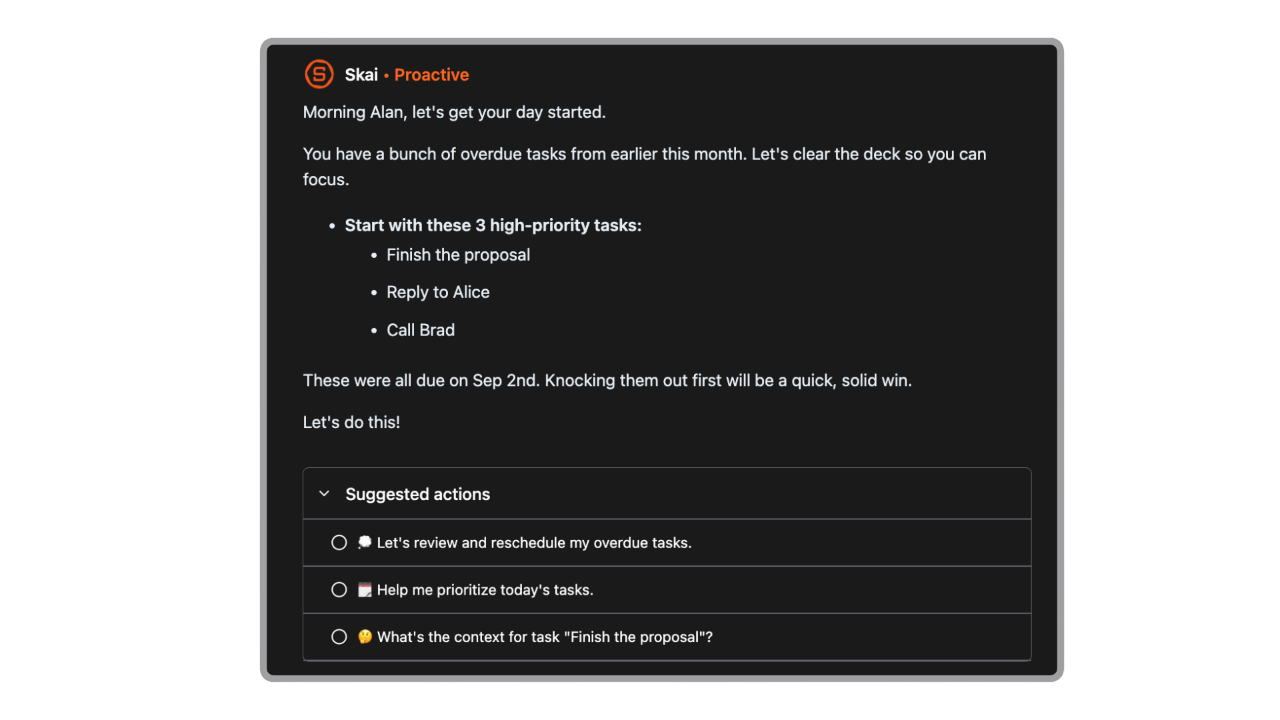
- Task Assistant: Turns thoughts or messages into to-dos, reminders, or calendar events

- Integrates notes, tasks, and calendar so everything stays connected and contextual
- Automatically links related notes and tasks, so you never lose the “why” behind your work
- Syncs with Google Calendar and other tools to keep your schedule up to date
What I liked
- The task assistant is a lifesaver. I can just brain dump: “Follow up with Sarah next week” - and it schedules it for me.
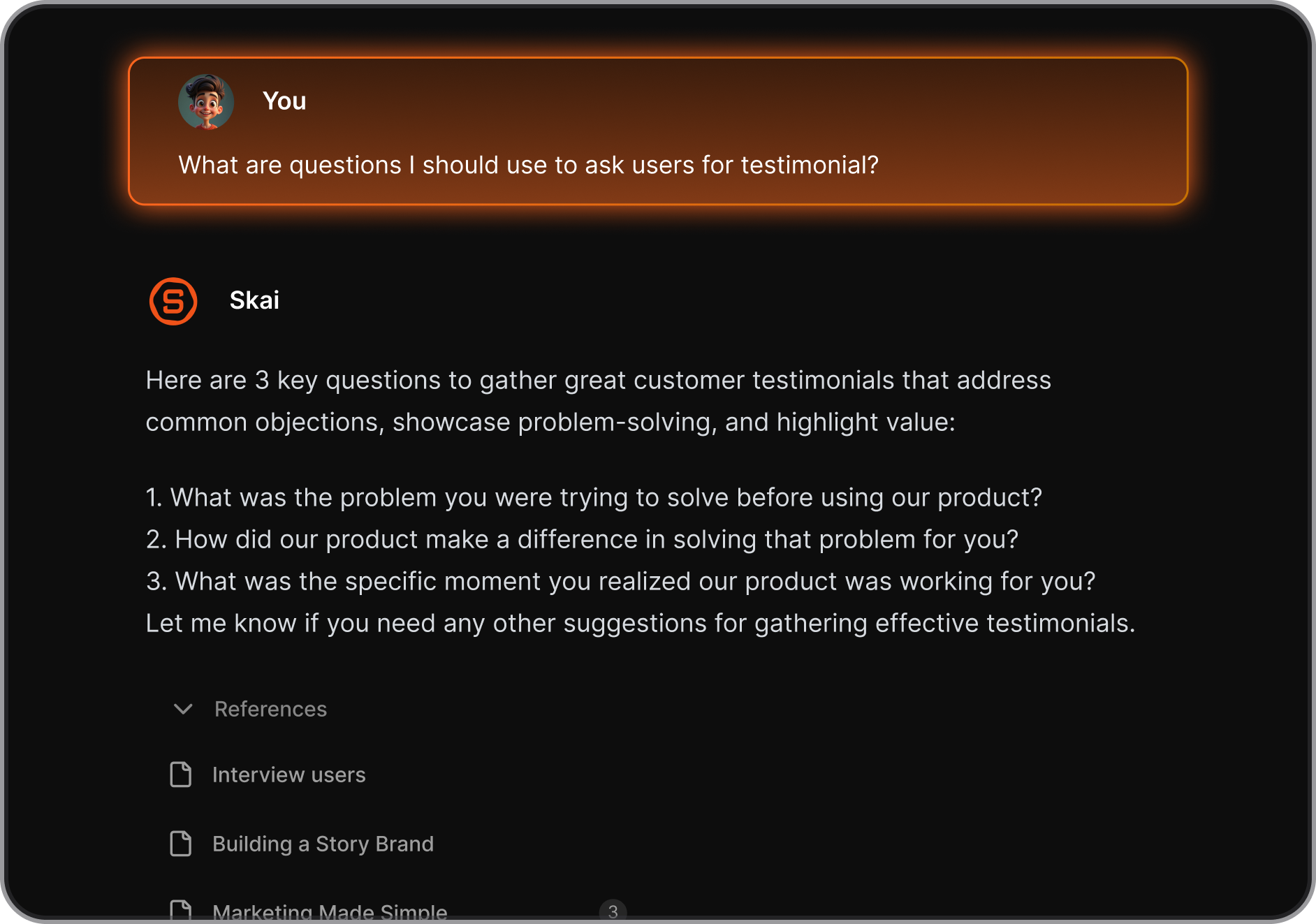
- The seamless link between notes, tasks, and calendar makes it easy to see the full context behind what you’re working on.
- You can turn meeting notes or random ideas directly into tasks and schedule them instantly.
Cons
- Requires internet access for full functionality.
Pricing
- Free
- Starter: Monthly at $8/month, Annually at $6/month (with early user discount)
- Standard: Monthly at $16/month, Annually at $12/month (with early user discount)
Suitable for
- Entrepreneurs, managers, and researchers who manage a lot of information
- Professionals who want to reduce context switching between tools
- Anyone looking for an AI-powered “second brain” that helps organize ideas, tasks, and time seamlessly
Saner.AI Reviews

How to start
- Go to Saner.AI and create a free account
- Connect your calendar, notes, and task sources
- Start by dumping your thoughts or uploading existing notes
The AI Business Management Software for you
2. Asana - Project Management

Asana is a robust project and business management platform that helps teams organize, track, and scale their work. It supports everything from simple task lists to enterprise-level portfolios, with flexible views, automation, and AI-powered workflows to keep projects running smoothly.
Key features:
- Smart & flexible views — List, Board (Kanban), Timeline, and Calendar views let teams visualize work however they prefer.
- AI workflows — The 2025 update added automation templates that help plan, assign, and predict task timelines intelligently.
- Workload & portfolio management — Track multiple projects, monitor progress, and balance team capacity in real time.
- Integration ecosystem — Connects with 200+ tools like Slack, Google Drive, and Dropbox for seamless collaboration.
What I liked:
- The interface is intuitive
- It scales well - small teams can start simple, while larger organizations can manage complex, multi-level projects.
What I disliked:
- There’s a learning curve; without proper onboarding, projects can quickly become cluttered.
- Advanced features like Portfolios and Workload tracking are locked behind paid tiers.
- The mobile app, while functional, still feels less efficient for managing complex projects compared to a desktop.
Pricing:
- Free plan available for individuals or small teams
- Starter plan from around $10.99 per user/month (billed annually)
Suitable for:
- Teams that need more structure than a simple to-do list.
- Companies managing multiple projects across departments.
How to start:
- Go to asana.com and sign up for the free plan.
- Create your first project and explore the List or Board view to get familiar.
Asana Review (source)

3. Slack - Communication

Slack is a team communication hub that powers how modern businesses operate. It centralizes conversations, meetings, and integrations so teams can collaborate without getting buried in endless emails.
Key Features:
- Channel-based messaging to organize discussions by team, project, or topic
- Direct messages and huddles for instant audio/video calls and screen sharing
- Integrations with 2,600+ tools including Google Drive, Asana, Notion, ChatGPT, and more
- Enterprise-grade security with SSO, data encryption, and admin controls
What I Liked:
- Keeps all conversations, files, and updates in one place
- Channel structure increases transparency and alignment across departments
What I Disliked:
- Free plan limits message history and app integrations, which can quickly feel restrictive
- Without a good structure, channels can get noisy and overwhelming
- Lacks deep project management features like timelines or dependencies
Pricing:
- Free: 90-day message history and up to 10 integrations
- Pro: $7.25 per user/month (billed annually) with unlimited messages and integrations
- Business+: $15 per user/month (billed annually) with advanced security and admin tools
Suitable For:
- Startups, SMBs, and distributed teams
- Companies that collaborate across multiple departments or time zones
How to Start:
- Go to Slack’s website and create a free workspace
- Set up channels by team or project
Slack reviews (sourcea )

4. HubSpot - CRM

HubSpot CRM is a powerful all-in-one customer relationship management platform designed to help sales teams manage leads, deals, and communication - while aligning marketing, operations, and support in one place
Key Features:
- Contact & Lead Management – Track emails, calls, meetings, and notes in a single customer timeline.
- Sales Pipeline – Visual drag-and-drop deal board for tracking progress and forecasting revenue.
- Automation & Workflows – Automate follow-ups and lead nurturing with smart triggers.
- Integrations – Connects with Gmail, Outlook, Slack, Google Calendar, and 1,000+ other apps.
What I Liked:
- The free plan is generous and genuinely usable for early-stage teams.
- Quick, beginner-friendly setup - you can start tracking deals in minutes.
What I Disliked:
- Pricing increases fast as you scale or add automation features.
- Customization options are more limited than enterprise tools like Salesforce.
- The jump from Starter to Professional plans can be steep for small teams.
Pricing (2025):
- Free plan available with core CRM features.
- Starter: around $15–$20 per user/month (billed annually).
Suitable For:
- Small to medium-sized businesses that want a unified CRM for sales, marketing, and service.
- Teams seeking an easy-to-use platform that scales as they grow.
How to Get Started:
- Sign up for a free HubSpot CRM account.
- Import contacts and sync your email or calendar.
- Set up your pipeline and basic automation for tasks and follow-ups.
HubSpot Reviews (Source)

5. QuickBooks - Accounting & Finance Management

QuickBooks is one of the most trusted accounting and finance tools for businesses of all sizes. It helps you manage bookkeeping, invoices, expenses, and cash flow all in one place - making it the financial backbone of your business management stack.
Key features
- Bookkeeping automation: Syncs with your bank accounts to automatically categorize and reconcile transactions
- Invoicing & payments: Create professional invoices, send estimates, and collect payments online
- Expense tracking: Capture receipts, manage bills, and track expenses or mileage automatically
- Financial reports & dashboards: Generate real-time reports like profit & loss, balance sheets, and cash flow summaries
What I liked
- Extremely comprehensive: You can handle bookkeeping, invoicing, reporting, payroll, and even forecasting from one platform
- Massive ecosystem: Because QuickBooks is so widely used, it’s easy to find accountants and integrations that work right out of the box
- Scales well: Whether you’re a freelancer or managing multiple entities, the platform grows with your business
What I disliked
- Pricing scales up quickly as you add users or advanced features
- Can feel overwhelming for non-finance users or very small businesses
- Occasional sync issues with banks and integrations reported by users
- The desktop version remains complex to manage compared to the more streamlined online experience
Pricing
- Solopreneur plan: around $20/month
- Simple Start plan: around $35/month
- Essentials, Plus, and Advanced plans: range up to $235/month depending on features and user seats
- Desktop Pro: around $399 for single-user license (one-time purchase option)
How to start
- Sign up for a free trial at QuickBooks.com
- Connect your bank and credit card accounts
- Import or create your chart of accounts
Suitable for
- Small and medium-sized businesses managing their own books
- Entrepreneurs who want to automate financial admin
- Teams that need payroll, expense tracking, and invoicing in one platform
QuickBooks reviews (source)

6. Lemlist

Lemlist is a powerful outreach platform built to scale personalized contact and follow-up campaigns. It automates outbound efforts across email, LinkedIn, and call channels, with a strong focus on deliverability and human-like personalization. Ideal for sales teams, agencies, and small businesses who want real replies
Key features:
- AI-powered personalization & dynamic media: Add personalized text, images, or videos to emails automatically.
- Multichannel outreach: Combine email, LinkedIn, and calls in one sequence.
- Automated sequencing: Build multi-step campaigns and follow-ups across channels.
- CRM integrations: Connects with HubSpot, Salesforce, Pipedrive, Zapier, and Make.
What I liked:
- The personalization features make your outreach feel genuinely human with embedded videos and custom visuals.
- The multichannel workflow simplifies combining LinkedIn touches with automated email follow-ups.
What I disliked:
- The lead data isn’t always perfect
- Pricing can increase quickly for teams with multiple mailboxes or advanced automation needs.
- Reporting and deep CRM analytics could be more mature compared to enterprise-level tools.
Pricing:
- Free 14-day trial (no credit card required).
- Email Pro plan: $55/user/month (billed annually).
How to start:
- Visit lemlist.com and sign up for a free trial.
- Connect your sending email or domain.
- Upload your leads or use Lemlist’s built-in database.
- Build your outreach sequence, personalize it, and launch your campaign.
Suitable for:
- Professionals, sales reps, and agencies running outbound campaigns.
- Teams that value high personalization and strong deliverability.
- Small to mid-sized businesses aiming to unify email, LinkedIn, and CRM workflows.
Lemlist Reviews (Source)

7. Intercom Fin - Customer Support

Intercom (with Fin AI) is a modern customer-support and engagement platform that helps teams handle conversations, automate responses, and deliver consistent service across chat, email, and mobile. It’s designed for businesses that want to reduce manual workload, scale their support operations, and offer faster, more human-like experiences through AI.
Key features:
- Live Chat & Messaging Hub: Real-time conversations across website, mobile app, and email
- AI Agent “Fin”: Answers customer questions using your help center; supports voice and image recognition
- Automated Workflows & Bots: Build no-code automations to route, tag, and respond to repetitive inquiries
- Omnichannel Inbox: Manage all customer messages from one dashboard
What I liked:
- Fin AI can interpret screenshots or voice inputs for smarter support.
- Centralized communication helps teams avoid context switching across multiple tools.
- Self-service features help reduce manual workload and improve customer satisfaction.
What I disliked:
- Pricing can get expensive as support volume and team size increase.
- AI learning requires ongoing setup
- The feature set can feel heavy for smaller teams or simple workflows.
- While it’s powerful, it’s not a “chat-with-your-AI” tool - it’s focused on structured support workflows.
Pricing:
- Starts at $29 per user/month for basic plans.
- Fin AI costs around $0.99 per resolved conversation.
Suitable for:
- Startups, SaaS businesses, and enterprise teams scaling customer support
- Companies managing multi-channel customer interactions
How to start:
- Sign up at Intercom.com and start the free trial.
- Import existing FAQs or help docs to train Fin.
- Add the Intercom chat widget to your site or app.
Intercom Fin reviews (source)

🏁 Conclusion
Running a modern business means managing moving parts across sales, finance, projects, and people - and the truth is, doing it all manually just doesn’t scale anymore. The right business management software brings everything together, giving you visibility, structure, and time back to focus on strategy, not spreadsheets.
In 2025, the best tools go beyond basic organization. They connect data, automate busywork, and use AI to help you think and act faster - whether that’s Saner.AI tying your notes, tasks, and calendar together for better focus, Asana keeping projects on track, or QuickBooks making finances painless. Each tool has its lane, but together, they create a system that runs your business smoothly and intelligently.
If there’s one takeaway, it’s this:
Don’t pick tools that just “do tasks.” Pick the ones that think with you - the ones that reduce friction, connect your workflows, and help your team stay in flow.
Whether you’re managing 5 people or 500, investing in the right stack today means a calmer, more productive, and more future-ready business tomorrow.
Stay on top of your work with the Business Management Software
💡 FAQ: Best Business Management Software (2025 Guide)
1. What is Business Management Software?
Business management software is a suite of tools that help organizations streamline operations - from project management and communication to finance, CRM, and customer support.
Instead of juggling ten different apps, modern business management tools centralize your workflows so your team can stay organized, aligned, and productive.
Popular examples include:
- Saner.AI for knowledge and schedule management
- Asana for project tracking
- Slack for team communication
- HubSpot for CRM and sales
- QuickBooks for accounting
- Lemlist for outreach
- Intercom Fin for customer support automation
2. What makes a software the best for business management?
The best business management software helps you reduce context switching, automate repetitive tasks, and connect your tools together.
Key things to look for:
- 🔄 Integration – Connects your notes, tasks, and communication in one place
- 🤖 Automation – Handles reminders, scheduling, or data entry automatically
- 📊 Analytics – Helps you see progress across departments
- 🧠 Context – Keeps information organized by project or client
- 🪶 Ease of use – Simple enough for teams to adopt quickly
Saner.AI, for example, links your notes, calendar, and to-dos - so your daily work has context, not chaos.
3. What are the main types of business management software?
Here’s a quick breakdown by purpose:
| 💼 Category | 🧩 Example Tool | ⚙️ Purpose |
|---|---|---|
| Knowledge Management | Saner.AI | Connects notes, tasks, and calendars for contextual thinking |
| Project Management | Asana | Organizes tasks, projects, and timelines |
| Team Communication | Slack | Keeps conversations structured and searchable |
| CRM & Sales | HubSpot | Manages leads, deals, and pipelines |
| Accounting & Finance | QuickBooks | Handles invoices, payroll, and reports |
| Outreach | Lemlist | Automates personalized email campaigns |
| Customer Support | Intercom Fin | Uses AI to resolve customer queries instantly |
4. What is the most complete business management software?
There isn’t a single “one-size-fits-all” tool. The best setup combines specialized apps:
- Use Saner.AI as your central thinking hub (connects notes, tasks, and calendar).
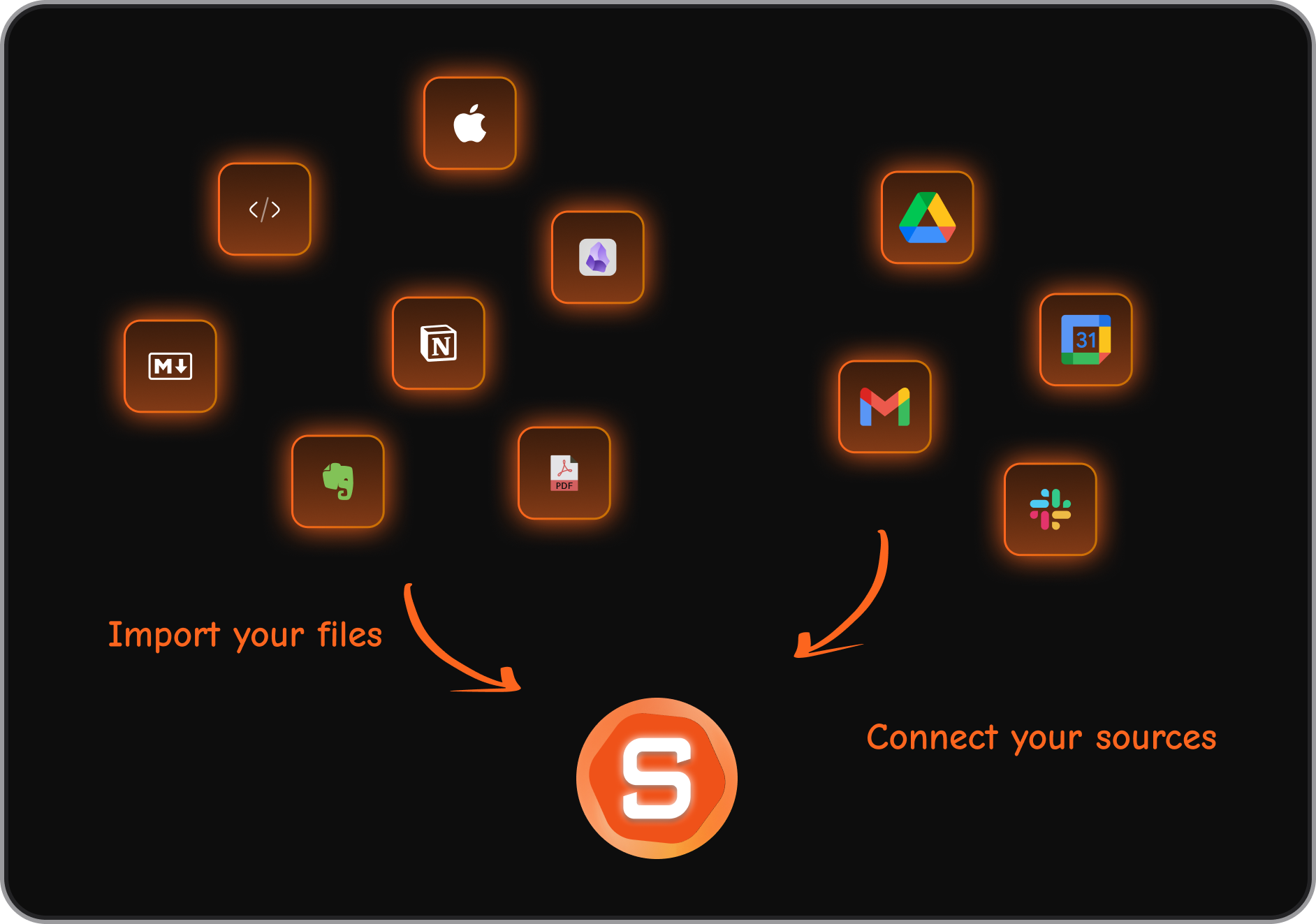
- Manage execution with Asana.
- Communicate through Slack.
- Track sales and leads with HubSpot.
- Handle finance with QuickBooks.
- Automate outreach with Lemlist.
- Support customers with Intercom Fin.
Together, they create an ecosystem that runs smoothly and keeps teams aligned.
5. How do I choose the best business management software for my team?
Ask yourself:
- What’s slowing my team down - communication, tracking, or decision-making?
- Do I need something for one department, or the whole business?
- Which tools can integrate without friction?
Start small:
Use Saner.AI to unify your information first, then expand with tools like Asana and HubSpot as your needs grow.
6. What is the best business management software for small businesses?
For small teams, simplicity and cost matter most.
Try this stack:
- Saner.AI – Keep notes, tasks, and meetings in one place.
- QuickBooks – Simplify bookkeeping and invoicing.
- Slack – Keep communication fluid without endless emails.
These three tools cover 80% of what most small businesses need to run efficiently.
7. What’s the best business management software for startups?
Startups need flexibility, automation, and speed.
A great combination would be:
- Saner.AI for all-in-one planning and contextual note-taking
- Asana for sprint and milestone tracking
- HubSpot for lead management
- Lemlist for cold outreach and investor follow-ups
This stack helps startups move fast without losing organization.
8. Which business management software integrates best together?
Most top tools integrate seamlessly via APIs or native connections.
For example:
- Saner.AI connects with Google Calendar, Gmail, and Slack for context-aware workflows.
- Asana integrates with HubSpot and Slack to update tasks automatically.
- QuickBooks connects with HubSpot for syncing client and invoice data.
Integrations are the secret to reducing manual work and keeping information consistent across tools.
9. How do business management tools help with productivity?
They cut mental overhead by:
- Centralizing everything (like Saner.AI does for your notes and calendar)
- Reducing app-hopping
- Automating reminders, updates, and follow-ups
- Keeping everyone accountable with shared visibility
You get fewer pings, fewer spreadsheets, and more meaningful work done.
10. Is there a free business management software?
Yes, many of the best tools offer generous free plans:
- Saner.AI – Free for AI note search, task planning, and calendar sync
- Asana – Free for up to 10 users
- Slack – Free with message limits
- HubSpot – Free CRM for contacts and deals
- QuickBooks – Free trial available
- Lemlist – Free trial for outreach automation
- Intercom Fin – Free demo available
Start with the free tiers, then scale as your business grows.
11. Can AI improve business management software?
Absolutely. AI now powers:
- Smart prioritization (like Saner.AI suggesting next tasks)
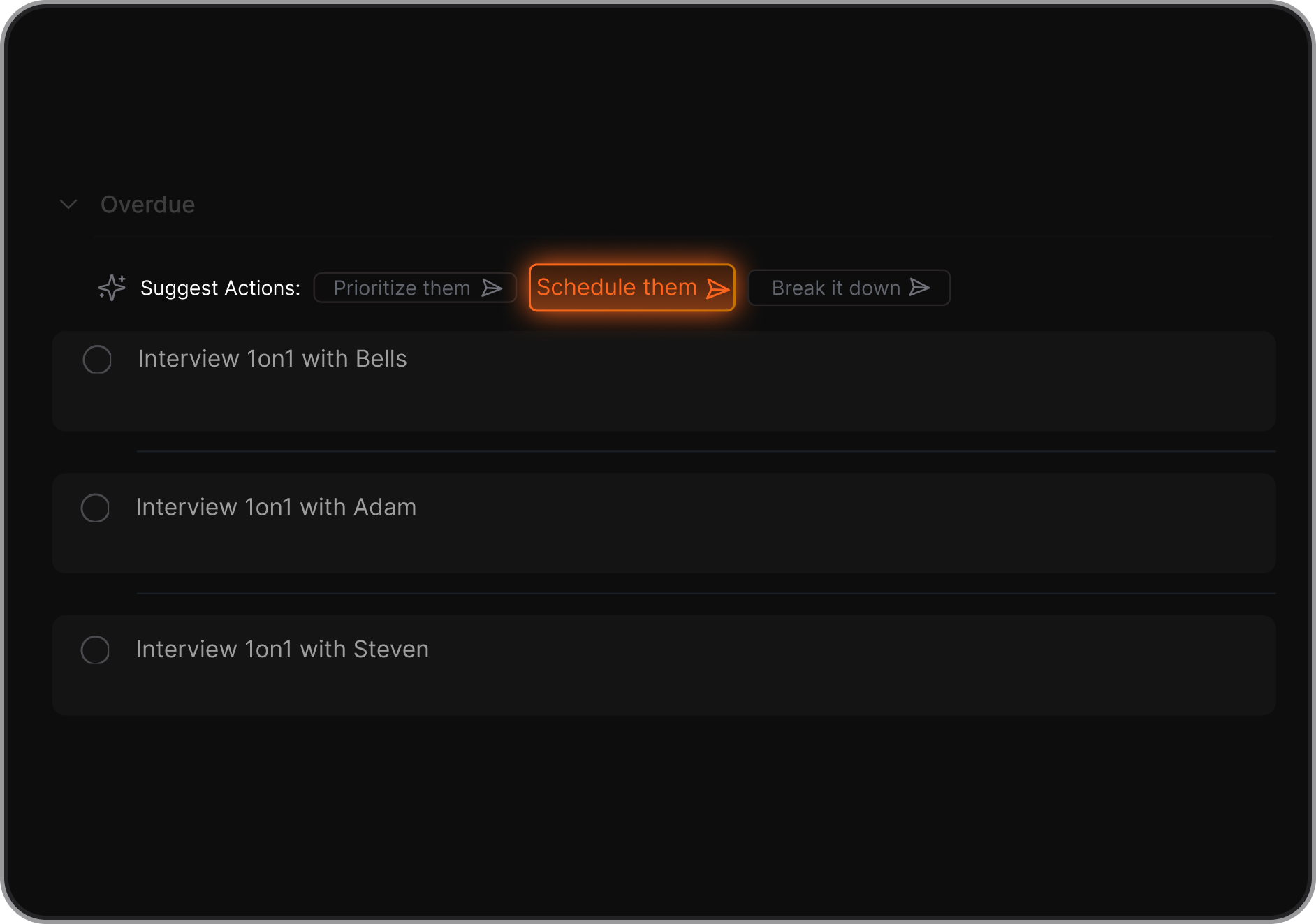
- Auto-replies in customer support (Intercom Fin)
- Predictive sales analytics (HubSpot)
- Automated time tracking (Asana)
Modern business management isn’t just about organization - it’s about intelligent execution.
12. What’s the most beginner-friendly business management software?
If you’re new to digital tools, start with:
- Saner.AI for thinking and organizing naturally (notes → tasks → calendar)
- Asana for visual project tracking
- QuickBooks for finances (simple dashboards)
They’re intuitive, well-documented, and designed for non-technical users.
13. What’s the best business management software for remote teams?
Remote teams thrive with these tools:
- Slack for fast, async communication
- Asana for project visibility
- Saner.AI for aligning personal tasks with team goals
- Intercom Fin for supporting customers around the clock
Together, they recreate the clarity of an office - without being in one.
14. How do I integrate everything into one workflow?
The trick is to make one tool your hub and others your connectors.
Saner.AI works great as a thinking hub - it connects with your calendar, tasks, and communication tools like Slack.
You can then link Asana, HubSpot, and QuickBooks so updates flow automatically between systems.
Result: Less chaos, more clarity.
15. Final Takeaway: Which business management software should I start with?
Start with what brings clarity, not complexity.
Use Saner.AI as your daily workspace for notes, tasks, and schedules.
Add Asana for structured project management, and Slack for communication.
Layer in HubSpot, QuickBooks, Lemlist, and Intercom Fin as you scale.
The best business management software is the one that helps your team think clearly, act fast, and stay aligned - without feeling overwhelmed.
Stay on top of your work and life
